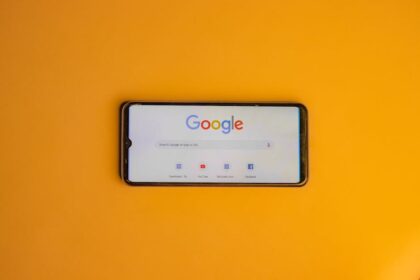Understanding Mobile-First Indexing in Depth for On-Page SEO
Mobile-first indexing represents a fundamental paradigm shift in how Google crawls, indexes, and ranks web content. Historically, Google’s primary index was built upon the desktop version of a website. With the pervasive adoption of mobile devices, Google recognized the need to align its indexing process with user behavior. Mobile-first indexing means Google predominantly uses the mobile version of a website for indexing and ranking purposes. This shift profoundly impacts on-page SEO, demanding that all optimization efforts are primarily focused on the mobile experience, ensuring content, technical elements, and user experience are not only present but optimized for smaller screens and diverse network conditions. Failure to adapt can result in significant ranking drops, as Google might index a sparse or broken mobile version of a site, ignoring the richer desktop counterpart.
This indexing methodology is more than just about responsiveness; it’s about content parity, speed, and user experience on mobile devices. Google’s crawlers, specifically Googlebot Smartphone, are now the primary agents for discovering and assessing web pages. If your mobile site lacks content present on your desktop site, or if it loads slowly, or if it presents a poor user experience, Google’s index will reflect these deficiencies, leading to diminished visibility. The implication is clear: every on-page SEO element, from the title tag to the hidden text in an accordion, must be meticulously evaluated through the lens of a mobile user and a mobile crawler.
Core On-Page Content Optimization for Mobile-First Indexing
The content itself is the cornerstone of any SEO strategy, and its presentation on mobile devices is paramount in a mobile-first world. Content parity is the absolute first principle: ensure that all the valuable, indexable content available on your desktop version is equally accessible and discoverable on your mobile version. This includes text, images, videos, structured data, and internal links. Google has explicitly stated that if critical content is omitted from the mobile version, it may not be indexed, regardless of its presence on the desktop site.
Ensuring Content Parity and Discoverability
A common pitfall is to prune content on mobile sites for perceived brevity or improved load times, often at the expense of comprehensive information. While conciseness is valuable for mobile users, it should never come at the cost of essential keywords, detailed explanations, or supporting media. Developers and content creators must collaborate to ensure that the mobile layout displays all substantive content. This means carefully reviewing any dynamic elements like accordions, tabs, or carousels. While these can be user-friendly for condensing information, Google needs to be able to crawl and interpret the content within them. For content within accordions or tabs, ensure it’s not loaded only on user interaction via JavaScript that Googlebot might not fully render. Ideally, the content should be present in the HTML and merely toggled for visibility by CSS or client-side JavaScript that is executed after initial page load.
Optimizing Text Content for Mobile Readability
Readability on a small screen is critical for user engagement and signals to Google about the quality of the content. Font size, line height, and paragraph spacing play significant roles. A minimum font size of 16px for body text is generally recommended to prevent users from having to zoom in. Line height should be generous (e.g., 1.5 to 1.8 times the font size) to improve text legibility. Short paragraphs (1-3 sentences), ample white space, and the strategic use of headings (H1, H2, H3) and bullet points break up text, making it scannable and digestible on smaller screens. Long, dense blocks of text are intimidating and lead to high bounce rates on mobile.
Strategic Use of Headings and Subheadings
Headings are not just for aesthetics; they provide structure and hierarchy, aiding both user comprehension and search engine crawling. For mobile, well-structured headings (H1 for the main topic, H2 for major sections, H3 for subsections) are even more vital as they help users quickly scan and grasp the content’s organization. Each heading should accurately reflect the content beneath it and ideally incorporate relevant keywords naturally. This semantic structuring helps Google understand the main themes and subtopics of your page, contributing to better topical relevance and potentially improved ranking for long-tail queries.
Visual Content Optimization: Images and Videos
Visual content, particularly images and videos, is crucial for engaging mobile users, but if not optimized, it can severely degrade page load speed. All images must be responsive, meaning they scale down appropriately for different screen sizes without losing quality or causing layout shifts. This can be achieved using CSS max-width: 100%; height: auto; or by implementing srcset and sizes attributes in the
For videos, ensure they are embedded responsively and ideally hosted on platforms like YouTube or Vimeo that handle adaptive streaming and mobile compatibility. Avoid autoplaying videos, especially with sound, as this can be disruptive and consume valuable mobile data. Provide transcripts or captions for videos, as this not only enhances accessibility but also provides additional indexable text content for search engines.
Schema Markup and Structured Data for Mobile SERPs
Structured data, implemented via Schema.org vocabulary, is crucial for on-page SEO regardless of the device. However, its impact on mobile-first indexing is particularly pronounced due to the increasingly rich and diverse mobile SERP features. Rich snippets, knowledge panels, carousels, and enhanced results often dominate mobile search results, providing direct answers or highly visible elements that capture user attention. For Google to display these enhanced results, it needs to understand the context and specific entities on your page.
Crucially, the structured data implemented on your desktop site must be identical and correctly implemented on your mobile version. If your mobile site lacks the same structured data, Google will not be able to generate the rich snippets for mobile users, even if they exist on the desktop version. Common and highly impactful schema types include:
- Article Schema: For news articles, blog posts.
- Product Schema: For e-commerce product pages (price, availability, reviews).
- LocalBusiness Schema: For local businesses (address, phone, opening hours).
- FAQPage Schema: For pages with frequently asked questions.
- HowTo Schema: For step-by-step instructions.
- VideoObject Schema: For video content.
Implement structured data using JSON-LD, as it is Google’s preferred format and simplifies implementation compared to Microdata or RDFa. Use Google’s Rich Results Test tool to validate your structured data and ensure it’s parsable and eligible for rich results on mobile.
Technical On-Page Optimization for Mobile-First Indexing
Beyond content, a suite of technical on-page elements must be meticulously optimized to ensure Googlebot Smartphone can effectively crawl, render, and index your pages, and that mobile users have an optimal experience. These elements directly influence Core Web Vitals and overall mobile usability.
Mobile Responsiveness and Viewport Configuration
Responsive web design is the gold standard for mobile-first indexing. It involves using fluid grids, flexible images, and CSS media queries to adapt the layout and content to various screen sizes. This ensures a single URL for both desktop and mobile versions, simplifying crawling and indexing for Google and eliminating potential duplicate content issues. The critical meta tag for responsive design is the viewport meta tag, which tells the browser how to control the page’s dimensions and scaling.
Correct Viewport Meta Tag Implementation:
This tag is fundamental. width=device-width instructs the page to match the screen’s width in device-independent pixels, and initial-scale=1.0 establishes a 1:1 relationship between CSS pixels and device-independent pixels. Without this tag, mobile browsers might render the page at a desktop width, then shrink it down, making it unreadable without zooming. Ensure your viewport is not set to a fixed width or maximum scale that prevents users from zooming.
Page Speed and Core Web Vitals on Mobile
Page load speed has been a ranking factor for years, but with mobile-first indexing, its importance is amplified, particularly through the lens of Core Web Vitals. These metrics (Largest Contentful Paint, First Input Delay, Cumulative Layout Shift) are now crucial signals for page experience, and Google evaluates them based on mobile performance.
- Largest Contentful Paint (LCP): Measures the render time of the largest image or text block visible within the viewport. On mobile, slow networks and unoptimized assets can significantly inflate LCP. Optimizing images (compression, responsive images, lazy loading), preloading critical resources, and ensuring fast server response times are key.
- First Input Delay (FID): Measures the time from when a user first interacts with a page (e.g., clicks a button, taps a link) to when the browser is actually able to process that interaction. Long-running JavaScript tasks are often the culprit. Deferring non-critical JavaScript, breaking up long tasks, and reducing third-party script usage are essential.
- Cumulative Layout Shift (CLS): Measures the sum of all individual layout shift scores for every unexpected layout shift that occurs during the entire lifespan of the page. On mobile, dynamic content, ads, or images without specified dimensions can cause content to jump around, leading to a frustrating user experience. Always specify dimensions for images and video elements, reserve space for dynamically injected content, and avoid inserting content above existing content unless triggered by user interaction.
Strategies for Improving Mobile Page Speed:
- Image Optimization: Serve images in next-gen formats (WebP), compress them aggressively, use
srcsetandsizesfor responsive images, and implement lazy loading for images and videos below the fold. - CSS and JavaScript Optimization: Minify CSS and JavaScript files, defer non-critical JavaScript, and inline critical CSS to reduce render-blocking resources. Consolidate CSS/JS files where possible to reduce HTTP requests.
- Server Response Time: A fast server response is foundational. Optimize database queries, use caching, and consider a Content Delivery Network (CDN) to serve content from servers closer to your users, reducing latency.
- Browser Caching: Leverage browser caching to store static assets (images, CSS, JS) locally on the user’s device, speeding up subsequent visits.
- Reduce Third-Party Scripts: Excessive third-party scripts (ads, analytics, social widgets) can significantly bloat page size and slow down loading. Evaluate their necessity and optimize their loading.
Meta Tags and Their Mobile-First Implications
While meta tags primarily influence how a page appears in SERPs and how crawlers understand it, their mobile-first implications are significant, particularly concerning display limits and directives for mobile crawlers.
- Title Tags (
- Meta Descriptions (
): Like title tags, meta descriptions are subject to varying display limits on mobile. While they don’t directly influence ranking, a well-crafted meta description can significantly improve click-through rates by providing a compelling summary of the page’s content. Keep them informative and engaging, ideally within 120-130 characters for consistent display across mobile devices, even if Google often displays more. Again, consistency between mobile and desktop versions is key. - Robots Meta Tag (
): This tag instructs search engine crawlers on whether to index a page or follow its links. Ensure that your mobile version does not accidentally contain anoindexornofollowdirective if your desktop version is indexable. This is a common and severe mistake in separate mobile URL configurations. Googlebot Smartphone needs to be able to crawl and index all your important content. - Canonical Tag (
): For sites using separate mobile URLs (m.dot sites), the canonical tag (andrel="alternate"withmedia="only screen and (max-width: XXXpx)") correctly signals the relationship between the desktop and mobile versions. However, with responsive design (the preferred approach), the canonical tag typically points to itself, regardless of whether the user is on mobile or desktop, as it’s the same URL. Ensure consistency. If you have a separate mobile URL, the mobile page should canonicalize to the desktop version, and the desktop version should have arel="alternate"tag pointing to the mobile version. However, Google strongly recommends responsive design to avoid these complexities. - Hreflang Tags (
): For multilingual or multi-regional sites,hreflangtags specify the language and geographical targeting of a page. Ensure these tags are correctly implemented on both desktop and mobile versions, pointing to the corresponding mobile (or responsive) URLs for international variants. Consistency across device types is paramount for correct international targeting in a mobile-first index.
Internal Linking and Site Architecture for Mobile
Internal linking is crucial for distributing “link equity” (PageRank), helping users navigate, and signaling content hierarchy to search engines. In a mobile-first indexing environment, the internal linking structure accessible to Googlebot Smartphone is what truly matters.
- Crawlability of Internal Links: Ensure that all important internal links are present and crawlable on your mobile site. Navigation menus, in-content links, and footer links should be consistently available across desktop and mobile versions. Be wary of navigation elements built solely with JavaScript that might not render correctly or be crawled efficiently by Googlebot. Ensure links are standard HTML
tags withhrefattributes. - Mobile Navigation Usability: While complex mega-menus might work on desktop, they are often cumbersome on mobile. Implement mobile-friendly navigation patterns like hamburger menus, tabbed navigation, or bottom navigation bars that are intuitive and easy to use with touch. However, ensure that all links within these mobile-specific navigations are discoverable by Googlebot. If a menu is hidden behind a button, the links within it should still be present in the HTML and discoverable.
- Anchor Text Optimization: Use descriptive and keyword-rich anchor text for internal links. This helps Google understand the context of the linked page and can improve its ranking for relevant queries. Ensure anchor text is legible and clickable on mobile devices.
- Consistent Site Architecture: Maintain a consistent and logical site architecture across desktop and mobile versions. The overall hierarchy and relationship between pages should be identical. This consistency aids both user navigation and Googlebot’s understanding of your site’s structure.
User Experience (UX) Considerations on Mobile
User experience is increasingly intertwined with SEO, especially in a mobile-first context. Google explicitly states that page experience signals (including Core Web Vitals and mobile usability) are ranking factors. A poor mobile UX can lead to high bounce rates, low engagement, and ultimately, lower rankings.
Tap Target Sizing and Spacing:
Buttons and links should be large enough and spaced far enough apart to be easily tapped with a thumb or finger without accidentally tapping neighboring elements. Google recommends a minimum tap target size of 48 CSS pixels. This reduces user frustration and accidental clicks, improving the overall mobile experience.
Avoiding Intrusive Interstitials and Pop-ups:
Google has a clear stance against intrusive interstitials (pop-ups that cover the entire screen) on mobile devices, especially those that appear immediately upon page load or during navigation. These can severely degrade the user experience and may result in a ranking penalty. Acceptable uses include cookie consent banners, age verification, or non-intrusive banners for app installs that use a reasonable amount of screen space. Prioritize providing immediate access to content.
Mobile Form Optimization:
If your site includes forms (contact forms, checkout processes, search bars), ensure they are optimized for mobile. Use large input fields, appropriate input types (e.g., type="email" for email fields to trigger the correct keyboard layout), and clear labels. Auto-focusing on the first field can also enhance usability. Keep forms concise, minimize the number of required fields, and provide clear error messages.
Accessibility on Mobile:
Mobile accessibility is crucial. Ensure sufficient color contrast between text and background for readability in varying light conditions. Provide alternative text for images for users with screen readers. Ensure all interactive elements are reachable and usable via assistive technologies. An accessible site is often a more usable site for everyone.
Mobile-Specific SEO Enhancements
Beyond general on-page principles, some aspects of mobile SEO deserve specific attention due to unique mobile user behaviors and Google’s emphasis on local and voice search.
Voice Search Optimization:
Mobile devices are primary drivers for voice searches. Voice queries are typically more conversational, longer, and often formulated as questions (e.g., “What’s the best pizza near me?”). Optimizing for voice search involves:
- Conversational Language: Incorporate natural language and answer common questions directly in your content.
- Long-Tail Keywords: Voice queries are often long-tail. Focus on providing comprehensive answers that might align with these queries.
- Featured Snippets: Voice assistants often pull answers directly from Google’s featured snippets. Structuring content in a Q&A format or as clear definitions can increase your chances of appearing as a featured snippet.
- Local Intent: Many voice searches have local intent (“restaurants near me,” “mechanic open now”). Ensure your local SEO is robust.
Local SEO for Mobile Users:
Mobile devices are inherently location-aware, making local SEO critical for businesses with a physical presence.
- NAP Consistency: Ensure Name, Address, Phone (NAP) information is consistent across your website, Google Business Profile, and other online directories.
- Schema Markup for Local Business: Implement
LocalBusinessschema markup to provide Google with explicit information about your business, including hours, address, and services. - “Near Me” Optimization: While Google generally understands “near me” implicitly, optimizing content for local queries (e.g., “best coffee shop in [city]”) is still valuable.
- Mobile-Friendly Maps: Embed interactive maps (e.g., Google Maps) that are easy to use on mobile devices for directions.
Progressive Web Apps (PWAs):
While not a direct ranking factor, PWAs offer a significant enhancement to the mobile user experience, indirectly benefiting SEO. PWAs are web applications that use modern web capabilities to deliver an app-like experience to users. They are:
- Reliable: Load instantly and never show the “downasaur,” even in uncertain network conditions.
- Fast: Respond quickly to user interactions with smooth animations and no janky scrolling.
- Engaging: Feel like a natural app on the device, with an immersive user experience.
By improving speed, reliability, and engagement, PWAs can positively impact user signals (lower bounce rate, higher time on site), which are beneficial for SEO. Googlebot can crawl and index PWAs just like regular websites, as long as the content is rendered server-side or via client-side rendering that Googlebot can process.
App Indexing:
If you have a mobile app that complements your website, app indexing allows Google to show content from your app in search results for users who have the app installed. While not strictly “on-page” for your website, it’s a mobile SEO consideration for content discoverability. Ensure your app content is deep-linked and that you’ve correctly implemented App Indexing APIs to allow Google to crawl and index your app content.
Auditing and Monitoring On-Page Mobile Performance
Regular auditing and monitoring are essential to ensure your on-page SEO remains optimized for mobile-first indexing and adapts to Google’s evolving algorithms.
Google Search Console (GSC):
GSC is your primary tool for monitoring how Google sees your mobile site.
- Mobile Usability Report: Identifies issues like small font size, content wider than screen, and clickable elements too close together. Addressing these directly improves your mobile usability score.
- Core Web Vitals Report: Provides a comprehensive overview of your LCP, FID, and CLS scores for mobile devices. It highlights specific URLs that need improvement, allowing you to prioritize optimization efforts.
- URL Inspection Tool: Allows you to inspect any URL on your site, fetch it as Googlebot Smartphone, and see exactly how Google renders it. Crucially, it shows you the “Mobile-Friendly Test” results for that specific URL and can reveal if there are any indexing issues on the mobile version compared to the desktop version. Use the “View crawled page” and “Screenshot” options to identify content disparities or rendering problems.
- Coverage Report: Check for “Indexed, though blocked by robots.txt” or “Excluded by ‘noindex’ tag” errors on your mobile URLs, especially if you have a separate mobile site.
- Crawl Stats Report: Understand how Googlebot Smartphone is crawling your site. Look for anomalies in crawl rate or errors.
Google’s Mobile-Friendly Test Tool:
This quick online tool provides an immediate assessment of a page’s mobile-friendliness and lists specific issues it finds. It’s excellent for a rapid check during development or after changes.
Lighthouse:
Integrated into Chrome DevTools, Lighthouse is an open-source automated tool for improving the quality of web pages. It runs a series of audits for performance, accessibility, best practices, SEO, and Progressive Web Apps, providing a score and actionable recommendations. Running Lighthouse with mobile simulation (e.g., throttling network and CPU) gives you critical insights into how your page performs on mobile devices.
Third-Party SEO Tools:
Many commercial SEO tools (e.g., SEMrush, Ahrefs, Moz) offer mobile SEO auditing features, including site speed analysis, mobile crawlability checks, and comparisons between desktop and mobile content. These tools can provide a broader view and help identify systemic issues across your site.
User Testing:
Beyond automated tools, conduct actual user testing on a variety of mobile devices (different screen sizes, operating systems, network conditions). This helps uncover usability issues that automated tools might miss, such as awkward navigation flows, difficult-to-fill forms, or content that looks fine but is hard to read in bright sunlight. Observing real users interacting with your mobile site provides invaluable qualitative data.
Common Pitfalls and Solutions in Mobile-First On-Page SEO
Despite the clear guidelines, several common mistakes continue to hinder sites in a mobile-first indexing environment. Understanding and proactively addressing these can prevent significant ranking and traffic losses.
1. Content Disparity Between Desktop and Mobile:
- Pitfall: Hiding or removing significant chunks of content (text, images, videos, internal links) from the mobile version to simplify the layout or speed up loading. Googlebot Smartphone crawls the mobile version, and if content is missing, it won’t be indexed.
- Solution: Ensure 100% content parity. All essential content that informs, educates, or sells on your desktop site must be present and accessible on your mobile site. If using accordions or tabs, ensure the content within them is present in the HTML DOM and not loaded asynchronously only upon user interaction in a way that Googlebot cannot render.
2. Slow Mobile Page Load Times:
- Pitfall: Large image files, unminified CSS/JS, excessive third-party scripts, or inefficient server responses leading to poor Core Web Vitals scores on mobile.
- Solution: Aggressively optimize images (compression, WebP, responsive images, lazy loading). Minify and compress all CSS and JavaScript. Defer non-critical JavaScript. Leverage browser caching and consider a CDN. Optimize server performance. Regularly monitor Core Web Vitals in GSC and use Lighthouse to diagnose specific issues.
3. Uncrawlable or Unrenderable Content/Resources:
- Pitfall: Blocking CSS, JavaScript, or image files via robots.txt, preventing Googlebot Smartphone from fully rendering and understanding the page. Using JavaScript to dynamically insert content that Googlebot struggles to execute or wait for.
- Solution: Never block essential resources (CSS, JS, images) via robots.txt. Use the URL Inspection tool in GSC to “Test Live URL” and “View crawled page” to ensure Googlebot can fully render your page and see all content as a user would. If using client-side rendering, ensure pre-rendering or dynamic rendering for Googlebot, or that your JavaScript is simple enough for Googlebot to execute.
4. Poor Mobile User Experience (UX):
- Pitfall: Tiny text, small tap targets, intrusive interstitials, non-responsive design that requires zooming or horizontal scrolling.
- Solution: Implement a truly responsive design with a correct
viewportmeta tag. Ensure sufficient font size (min 16px for body text) and line height. Design tap targets that are easily clickable (min 48px). Avoid intrusive interstitials that block content on mobile. Prioritize usability for touch interaction, ensuring intuitive navigation and easily completable forms.
5. Incorrect Canonicalization or Hreflang for Separate Mobile URLs:
- Pitfall: For sites with separate mobile URLs (m.dot sites), incorrect or missing
rel="canonical"andrel="alternate"tags can lead to indexing confusion or duplicate content issues. - Solution: Google strongly recommends responsive design to avoid this complexity. If you must use separate URLs, ensure the mobile page
m.example.com/pagehas arel="canonical"pointing to the desktopexample.com/page, and the desktop page has arel="alternate"pointing to the mobile version. Ensurehreflangtags, if used, also point to the correct mobile or responsive URL for each language/region variant.
6. Lack of Mobile-Specific Keyword Research and Optimization:
- Pitfall: Relying solely on desktop keyword research without considering how users search on mobile (e.g., voice queries, local intent, shorter attention spans).
- Solution: Conduct specific keyword research for mobile. Analyze voice search patterns, “near me” searches, and conversational queries. Incorporate long-tail keywords and question-based content into your on-page copy. Optimize for local SEO signals if applicable.
7. Ignoring Structured Data for Mobile SERP Features:
- Pitfall: Having structured data on the desktop site but omitting it or implementing it incorrectly on the mobile version, thus missing out on rich snippets and enhanced mobile SERP visibility.
- Solution: Ensure all structured data (JSON-LD recommended) present on your desktop version is identical and correctly implemented on your mobile version. Use Google’s Rich Results Test tool to validate all structured data for mobile readiness.
8. Over-reliance on Client-Side Rendering Without Proper Safeguards:
- Pitfall: Building single-page applications (SPAs) that rely heavily on JavaScript for content rendering without considering Googlebot’s rendering capabilities, leading to content not being indexed.
- Solution: For SPAs, implement server-side rendering (SSR), static site generation (SSG), or dynamic rendering to ensure Googlebot receives a fully rendered HTML version of the page. While Googlebot is getting better at rendering JavaScript, relying solely on client-side rendering without these safeguards is risky for critical content.
9. Inconsistent Internal Linking and Site Architecture:
- Pitfall: Mobile navigation menus that hide too many links or omit important sections compared to the desktop site, making it harder for Googlebot to discover content and pass link equity.
- Solution: Ensure that the internal linking structure and site hierarchy are consistent across desktop and mobile versions. All important pages should be discoverable via mobile navigation. While mobile navigation patterns differ, the underlying crawl path should be the same.
By meticulously addressing these on-page SEO factors through the lens of mobile-first indexing, businesses can ensure their digital presence remains robust, discoverable, and competitive in an increasingly mobile-centric search landscape. The ongoing commitment to mobile performance, content parity, and user experience is paramount for long-term SEO success.









